Simultaneously with typhoon number 15, we approach Shizuoka City. It is the last Shinkansen, Japan’s famous express train, to reach the city this evening coming from Narita Airport before the schedule is suspended. Heavy rain, harbinger of the typhoon, makes getting into the cab quite uncomfortable.
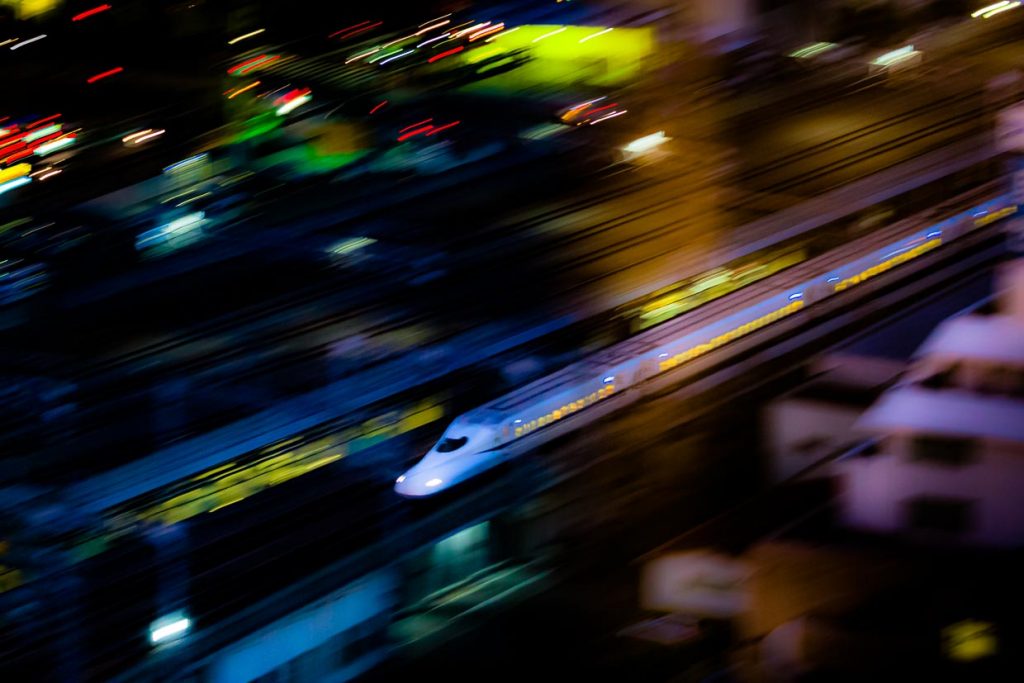
It’s pitch dark, the car winds up winding roads, and not much else can be seen through the windows. No matter, after a long flight from Düsseldorf to Tokyo and an exciting race between Shinkansen and Typhoon, we are glad to reach our first night’s lodging. The next morning, we receive a welcome that could not be more beautiful in Japan. Through a huge window front, the view sweeps over the bay of Suruga with Shizuoka City and remains, you can hardly believe your eyes, on Mount Fuji. The symbol of Japan, the holy mountain, the shy beauty, as the Japanese also call it, because it likes to cover itself in clouds, shows itself almost uncovered after the stormy typhoon night.


Nippondaira – the perfect start to a trip to Japan
The hotel above Suruga Bay has been around for over 50 years. With a view like a painting, the hotel restaurant The Terrace is a place where you would prefer to spend the whole day. The view of Mount Fuji varies almost hourly. Sometimes only the top of the crater is visible, sometimes it shows itself completely. The more than six-hectare park with a rock garden offers a view down to the city of Shizuoka in the prefecture of the same name. This prefecture is not one of the common travel destinations and is little known. Yet Shizuoka has much to offer nature and food lovers and can be reached in 60 minutes by Shinkansen from Tokyo.

All Day Dining at The Terrace Nippondaira
Guests can keep breakfast at Nippondaira entirely Japanese, with miso soup, plenty of fish, seaweed salad or dumplings. But you can also get a Western start to the day with cereal, fruit and scrambled eggs. Chef Yutaka Yoshizawa offers guests plenty of fish and seafood from Suruga Bay. Local Wagyu beef is on the menu, as is fresh-caught tuna.
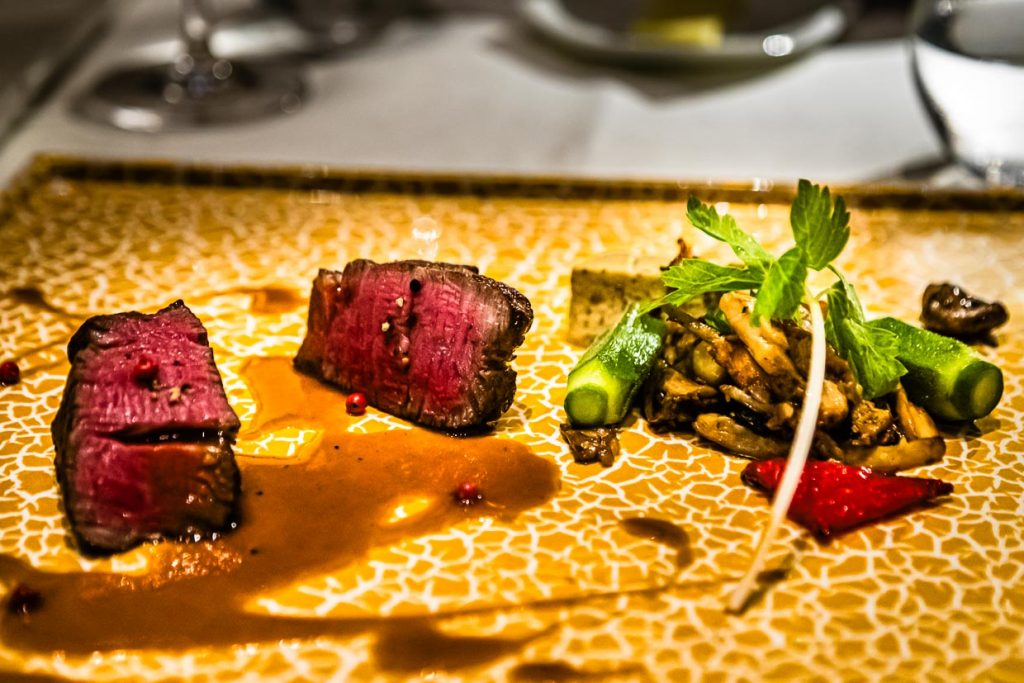
Important cultural site – Kunozan Toshogu Shrine
From the Nippondaira Hotel, you can walk to the old cable car, the Nihondaira Ropeway, which connects Mount Nihondaira and Mount Kunozan. The ride in the small cabin is already part of the sight. On the way down through the steep valley, a museum employee tells in Japanese about the important cultural site. Unfortunately, there is no translation into English. But already the rhythm of her voice, a fine rippling singsong, is an atmospheric companion through the green hills overlooking Suruga Bay, down to one of the most important cultural sites of the Japanese, the Kunozan Toshogu Shrine.

Historical bracket on: Shizuoka and the first Shogun
Toshogu Shrine was the resting place of the first shogun. His name was Tokugawa Ieyasu and he lived from 1543 to 1616, unifying Japan after a long period of civil wars and ushering in a long period of peace. After spending the last decade of his life at a nearby castle, Ieyasu designated Mount Kunozan for the construction of his mausoleum. Of the many Toshogu shrines dedicated to Ieyasu throughout Japan, Shizuoka’s shrine is second only to Nikko, where his body was later moved by order of his grandson. But it is said that his soul remained in this place. In earlier times, Toshogu Shrine on Mount Kunozan could only be reached by walking up more than 1,000 stone steps.
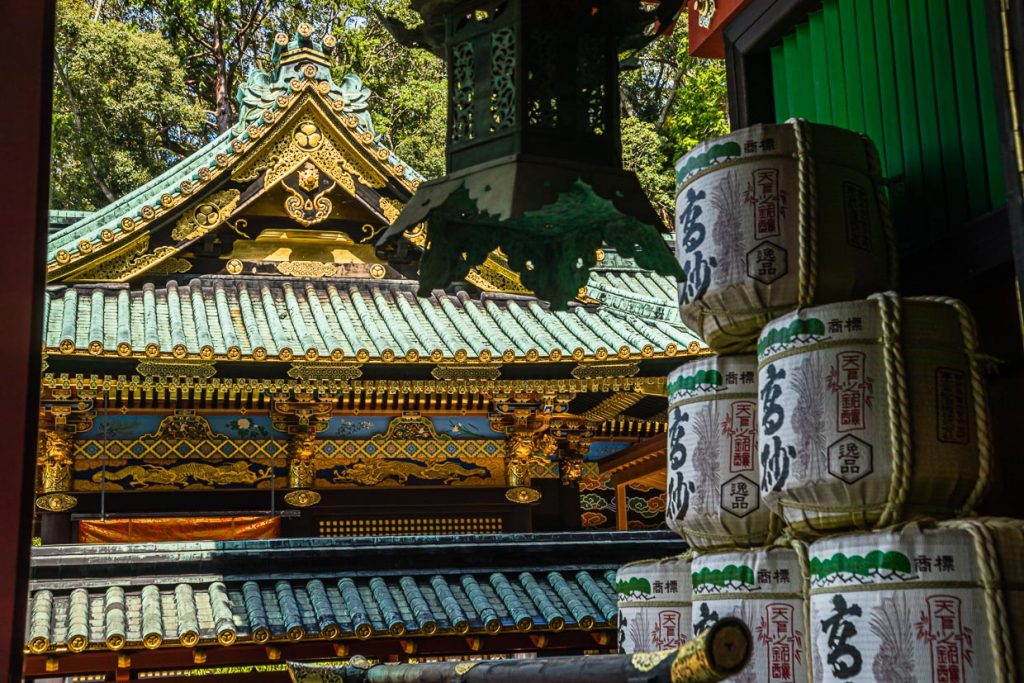

The Shogunate in Japan – Peace and Isolation
On a guided tour of the historically significant grounds of the Toshogu Shrine, one learns much about the history of Japan and the beginning of the Edo period, which was established by Tokugawa Ieyasu, the first shogun. In 1600, he fought the decisive battle that made him the sole ruler. In 1603, Ieyasu received the title of shogun. This year is also considered the beginning of the Edo period. Tokugawa Ieyasu moved the seat of the capital from Kyoto to Edo, now Tokyo. His goal was the consolidation and stability of the country. Seeing this threatened by outside influences, he decided to completely isolate the country.

From 1603 to 1867, very few foreigners were allowed to live and trade in Japan. Sakoku, as the period of isolation is called in Japan, brought many years of peace to the country. However, Sakoku also meant that the country lagged behind in technical progress and economic development. Tokugawa Ieyasu died in 1616 in what is now Shizuoka. His achievement, the unification of the country and the end of fighting between individual commanders, changed the country permanently and made him one of the most famous shoguns in the history of Japan.

Shizuoka – home of the first and the last shogun
Tokugawa Ieyasu, of course, did not live to see the opening of the country in 1867. The Tokugawa Shogunate, which he founded, eventually lasted for over 250 years. The opening of Japan also meant the end of the Tokugawa Shogunate. And so somehow the Shogun era in Shizuoka comes full circle. The 15th and thus last shogun Tokugawa Yoshinobu, after being deposed and imprisoned for a year, moved into a former officers’ house in the middle of Shizuoka City. He lived there for more than 20 years and, as the story goes, intensively pursued his hobbies of hunting and photography, and later also the use of modern means of transportation such as cars and bicycles. His bicycle is still in the restaurant Fugetsuro. Especially worth seeing and a popular place for wedding photos is the garden of Fugetsuro. A bridge spans a small lake and visitors enter the restaurant via it.
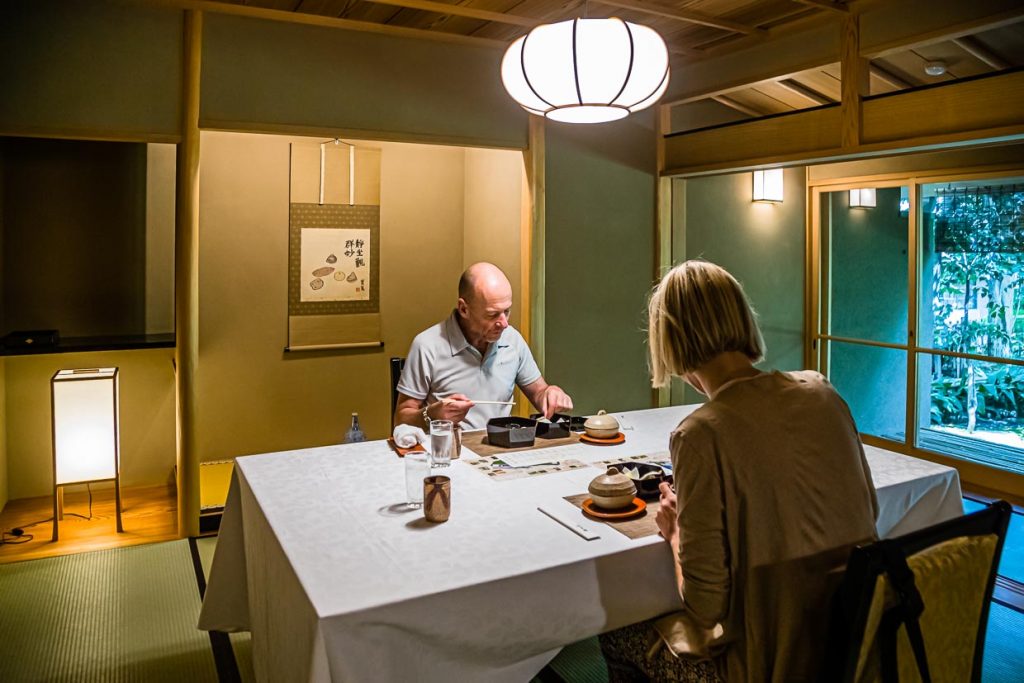
The favorite meal of the last shogun at Fugetsuro
Fugetsuro is a small historical oasis and is very much hidden behind tall houses on a busy street in Shizuoka City. The residence of the last shogun was destroyed by fire three times and rebuilt on the spot each time. A meal in one of the restaurant’s dining rooms lets diners gaze out over the lake, where the last shogun also enjoyed boating. This historical bracket between the first and last shogun makes Shizuoka Prefecture, in addition to its many scenic and culinary attractions, a historical hotspot for learning about traditional Japan and its history.
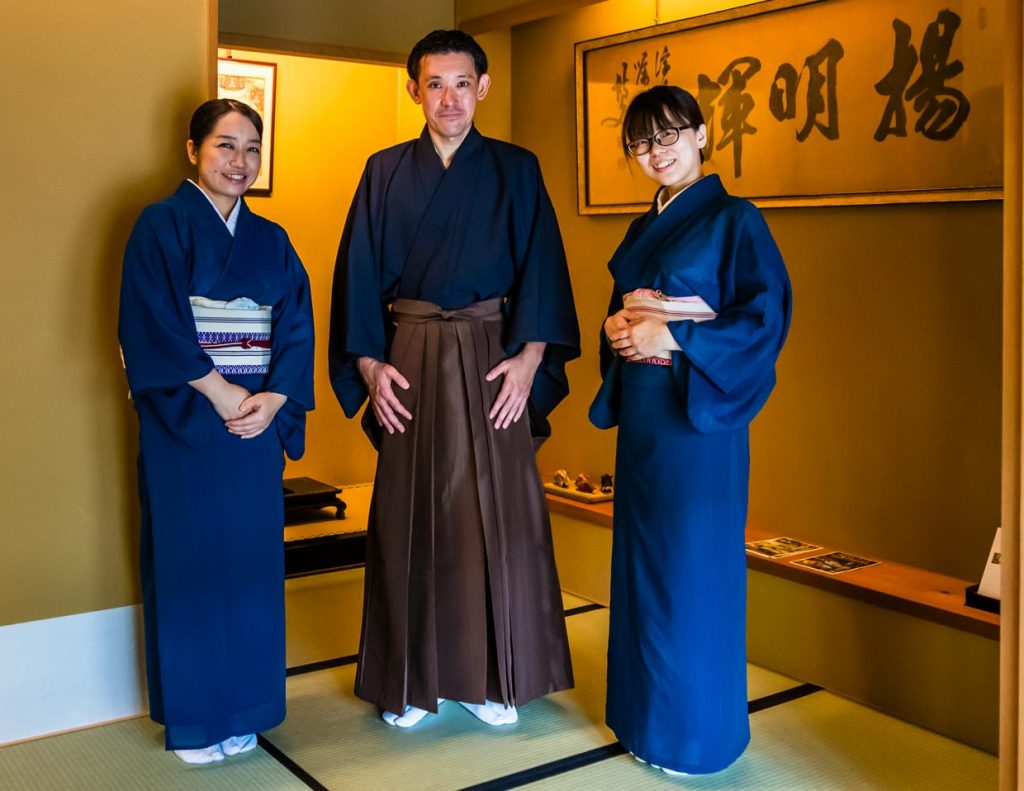
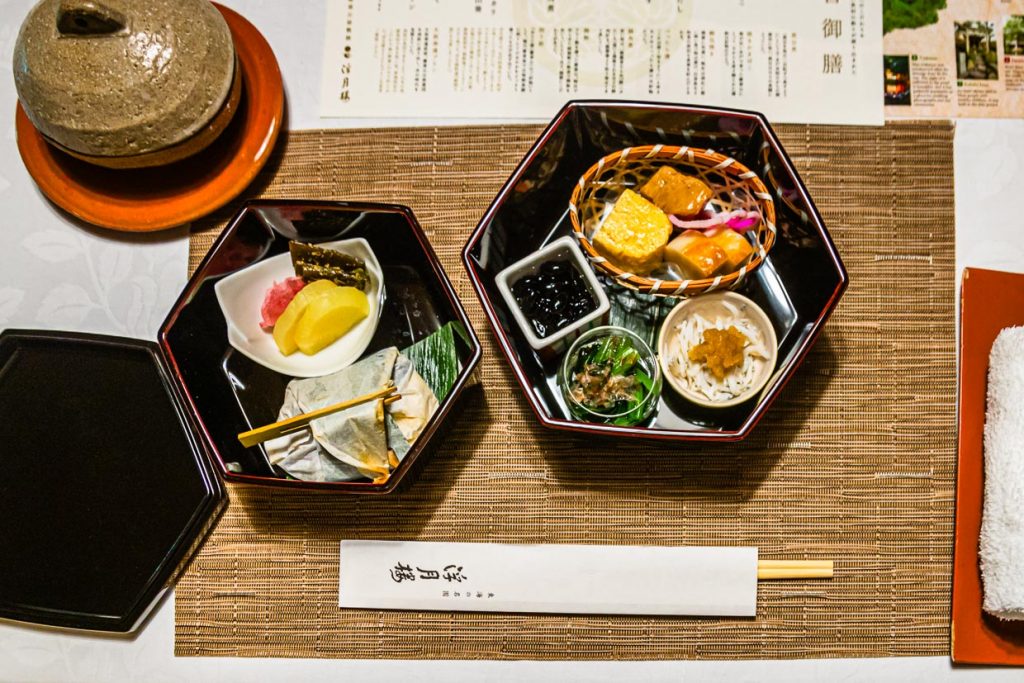
Travel tips Shizuoka Prefecture
A region of Japan that sounds quite unknown to visitors from Europe, but has an immense amount to offer. Shizuoka is also the City of Green Tea. In the many tea plantations, tourists can determine the intensity of a visit to the tea fields around Shizuoka City themselves. Click here for a report on green tea – the elixir of life for the Japanese.
History and Tradition
Visit of a “National Treasure”, the Kunozan Tushogu Shrine.
Culinary Shizuoka
Shizuoka Prefecture has many culinary experiences on offer. For example, dining at the house of the last shogun, Fugetsuro. Other food experiences in Shizuoka.
A visit to a soy sauce factory. Click here for a report on shoyu – the spice of the Japanese.
Japan’s most famous mountain, Mount Fuji, is always in view at this hotel: The Nippondaira Hotel
The stay in the prefecture was partly supported by the Shizuoka Tourism Board.


